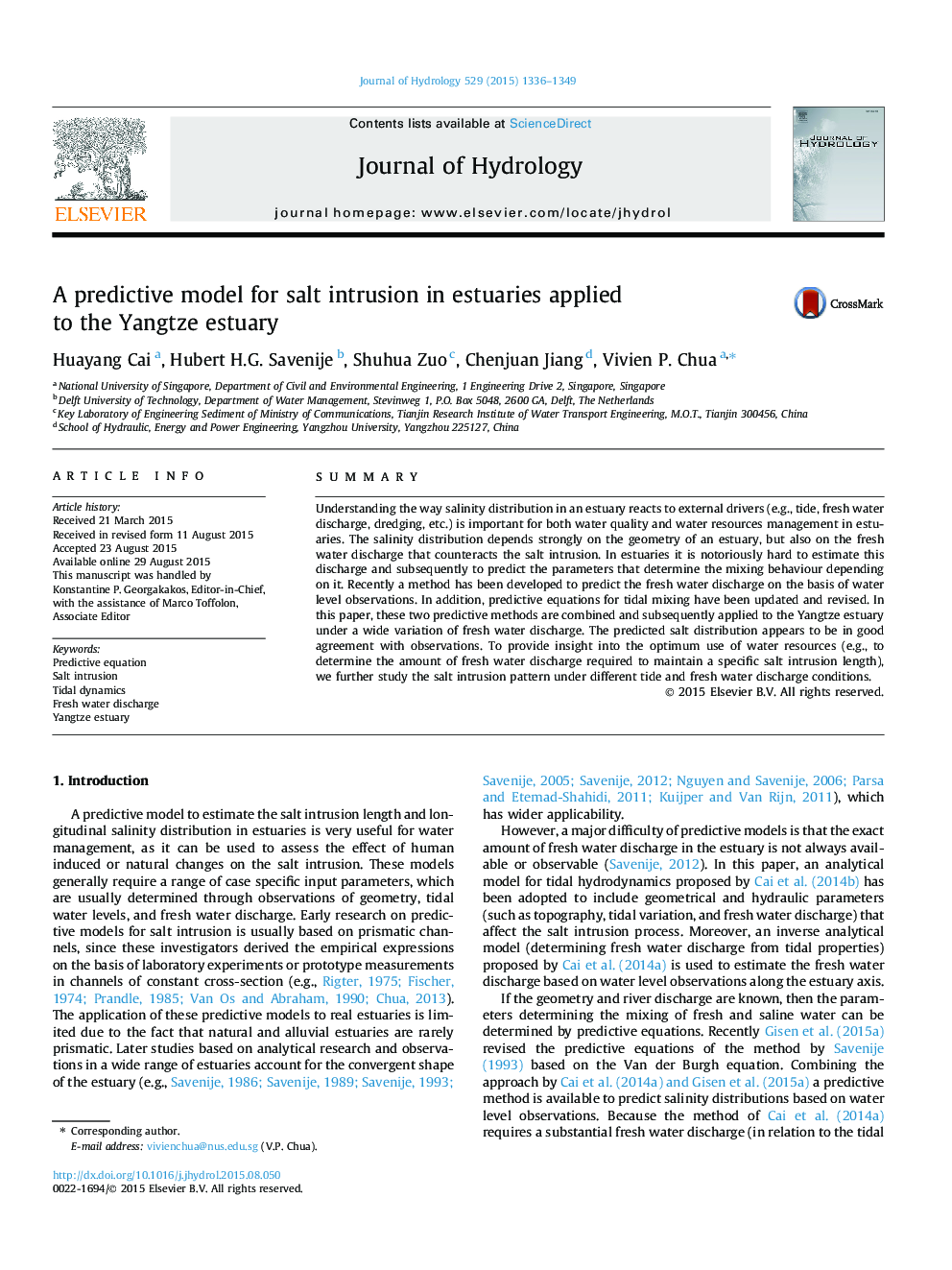| Article ID | Journal | Published Year | Pages | File Type |
|---|---|---|---|---|
| 6410777 | Journal of Hydrology | 2015 | 14 Pages |
â¢A predictive model is presented to analyse salt intrusion in estuaries.â¢The model allows estimating fresh water discharge from water levels.â¢The model has been validated and applied in the Yangtze estuary.â¢The response of salt intrusion to tide and fresh water discharge is assessed.â¢The method is useful when river discharge observations are unavailable.
SummaryUnderstanding the way salinity distribution in an estuary reacts to external drivers (e.g., tide, fresh water discharge, dredging, etc.) is important for both water quality and water resources management in estuaries. The salinity distribution depends strongly on the geometry of an estuary, but also on the fresh water discharge that counteracts the salt intrusion. In estuaries it is notoriously hard to estimate this discharge and subsequently to predict the parameters that determine the mixing behaviour depending on it. Recently a method has been developed to predict the fresh water discharge on the basis of water level observations. In addition, predictive equations for tidal mixing have been updated and revised. In this paper, these two predictive methods are combined and subsequently applied to the Yangtze estuary under a wide variation of fresh water discharge. The predicted salt distribution appears to be in good agreement with observations. To provide insight into the optimum use of water resources (e.g., to determine the amount of fresh water discharge required to maintain a specific salt intrusion length), we further study the salt intrusion pattern under different tide and fresh water discharge conditions.
